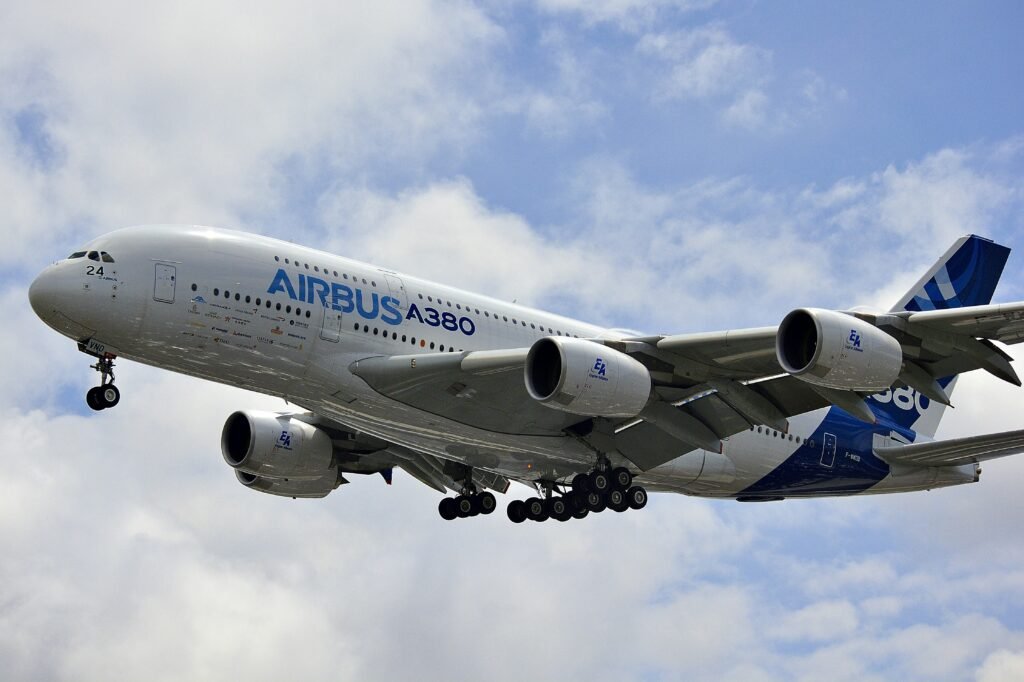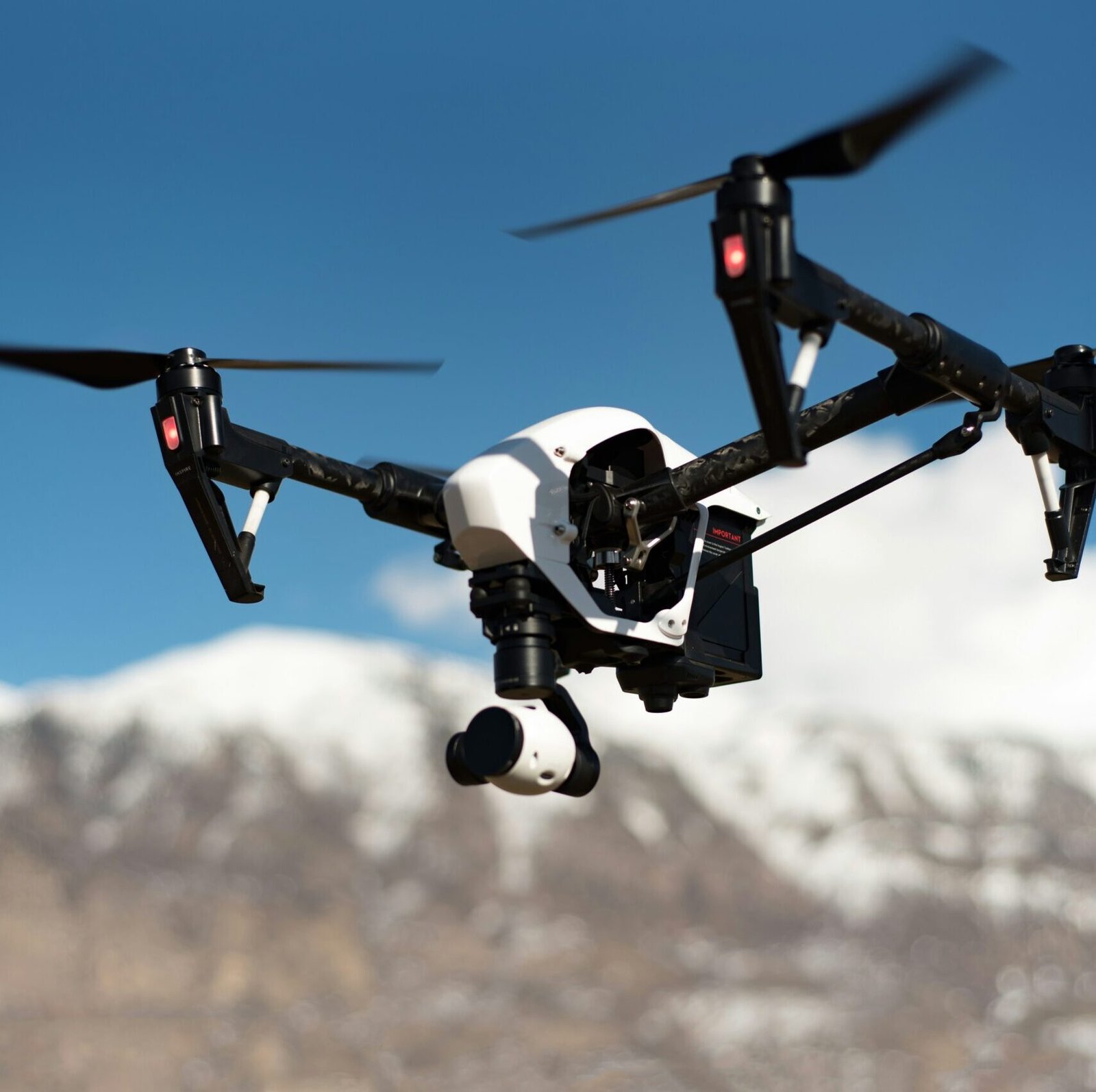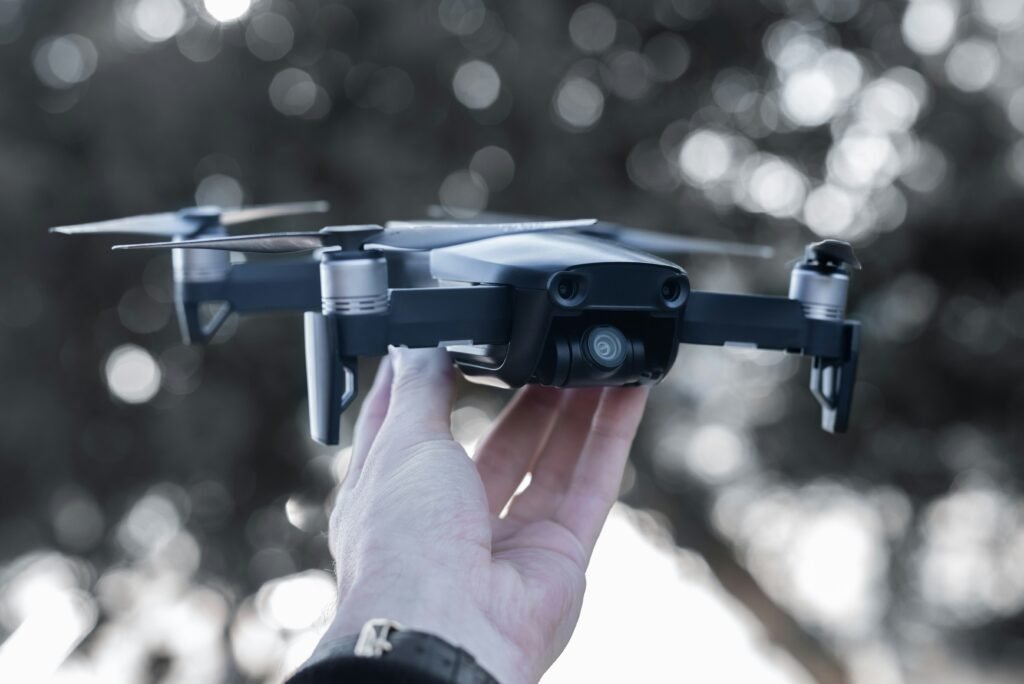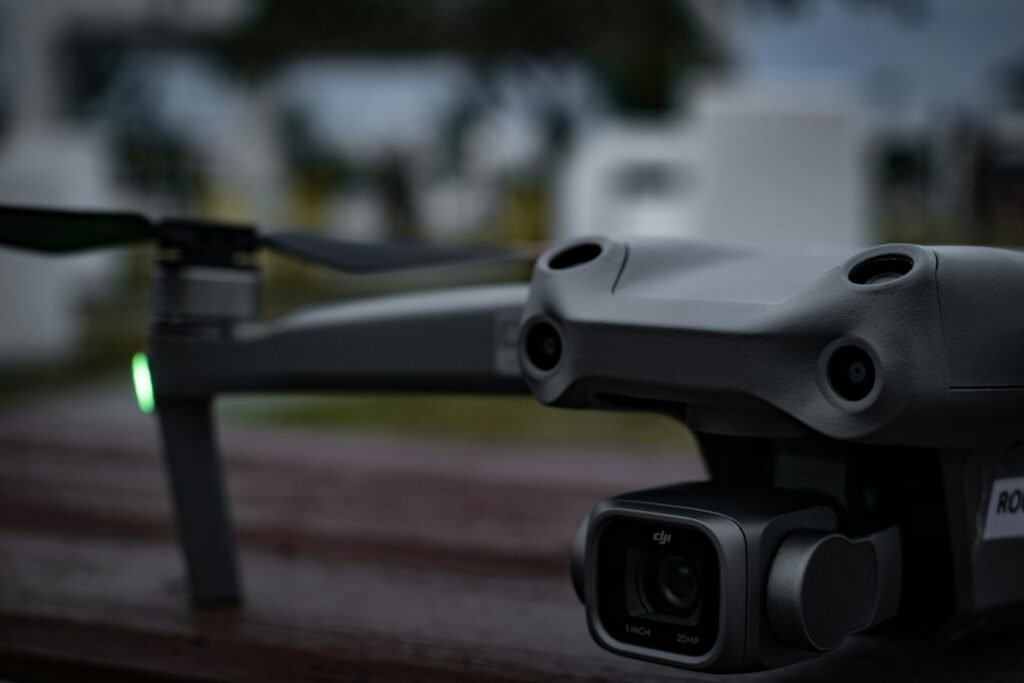
Introduction to Flight Mechanics
The mechanics of flight are grounded in the interplay of four fundamental forces: lift, weight, thrust, and drag. Understanding these forces is crucial for grasping how airplanes achieve and maintain flight. Each force plays a distinct role in the flying process, contributing to the overall stability and movement of the aircraft in the atmosphere.
Lift is the upward force that counteracts the weight of the airplane, allowing it to ascend into the sky. It is generated primarily by the wings, which are designed with a specific shape known as an airfoil. The curvature of an airfoil causes air to travel faster over the top surface than the bottom, resulting in a pressure difference. This difference generates lift, an essential component of flight. The efficacy of lift is influenced by multiple factors, including the angle of attack – the angle between the wing and the oncoming air. When optimized, this angle enhances lift by directing air downward, generating a reciprocal upward force.
Weight, on the other hand, is the force due to gravity acting on the aircraft, pulling it downward. The airplane’s wings must generate sufficient lift to overcome its weight for successful takeoff and sustained flight. Conversely, thrust is the forward force that propels the airplane through the air, typically produced by engines or propellers. The efficiency of thrust plays a vital role in achieving the necessary speed to create lift.
Lastly, drag is the resistance an airplane encounters as it moves through the air. It acts in the opposite direction to thrust, reducing the aircraft’s acceleration. There are various types of drag, including parasitic drag, which increases with speed, and induced drag, which is associated with lift. A pilot must manage these forces effectively to ensure a smooth and safe flight experience. Understanding these mechanics provides essential insight into the complexities of aviation and flight operations.
The Four Forces of Flight
The mechanics of flight encompass a delicate balance between four fundamental forces: lift, weight, thrust, and drag. Understanding these forces is essential for appreciating how airplanes achieve and maintain flight. Each force plays a critical role during various phases of an aircraft’s journey from takeoff to landing.
Lift is the upward force that counters weight and is crucial for an airplane to become airborne. It is generated primarily by the wings as air flows over and under them. The shape of the wings is designed to create a pressure differential, with lower pressure above the wing and higher pressure beneath. A classic example can be observed during takeoff; as the airplane accelerates down the runway, its wings generate sufficient lift to overcome the gravitational force pulling it downwards.
Weight, or gravity, acts in opposition to lift and provides the downward force that must be overcome for an aircraft to ascend. Weight is determined by the mass of the airplane and the effects of gravity. During takeoff, pilots must ensure that the aircraft has enough speed for lift to exceed weight, allowing for a successful ascent into the sky.
Thrust is the force that propels the airplane forward and is provided by the engines. During the takeoff phase, engines generate thrust that increases the airplane’s speed, facilitating the lift necessary for flight. In contrast, drag is the resistance force encountered as the airplane moves through the atmosphere. It occurs due to friction and changes in air pressure around the aircraft. Pilots must carefully manage thrust to ensure that it is sufficient to counteract drag while achieving the desired speed for cruising and landing.
In conclusion, the interaction among lift, weight, thrust, and drag is integral to the flight mechanics of an airplane, allowing it to take off, cruise, and land safely while maintaining stability in the air. Understanding these forces provides insight into the complex physics that govern aviation.
How Airplanes Generate Lift
Lift is a fundamental force that enables airplanes to rise off the ground and maintain flight. It is primarily generated by the wings of the aircraft, which are designed to exploit the principles of aerodynamics. Two key scientific concepts contribute to the generation of lift: Bernoulli’s Principle and Newton’s Third Law of Motion.
According to Bernoulli’s Principle, an increase in the speed of a fluid (in this case, air) occurs simultaneously with a decrease in pressure. Airfoil-shaped wings are crucial for this effect, as they are designed with a curved upper surface and a flatter lower surface. When an airplane moves forward, air travels faster over the curved top of the wing than beneath it. This speed differential leads to lower pressure on the upper wing surface compared to the lower surface, generating lift. Therefore, the shape and design of the wings are critical in optimizing lift efficiency.
In conjunction with Bernoulli’s Principle, Newton’s Third Law states that for every action, there is an equal and opposite reaction. As the wings of the airplane push air downwards, a reaction occurs in the form of lift pushing the airplane upwards. This interaction between the aircraft and the air is vital for maintaining altitude and control during flight. Moreover, the angle of attack—the angle between the wing and the oncoming airflow—exerts a significant influence on lift. Increasing the angle of attack enhances lift up to a point, but exceeding a critical angle can lead to stalling, where lift drops dramatically.
In summary, the generation of lift in airplanes is a sophisticated interplay between wing design, air pressure, velocity, and fundamental physical laws. Understanding these principles equips one with valuable insights into the mechanics behind flight and the intricate design of aircraft wings.
Understanding Thrust and Drag
In the context of aviation, thrust and drag are two fundamental forces that influence an aircraft’s flight. Thrust is the forward force generated by the engines, enabling the aircraft to move through the air, while drag refers to the aerodynamic resistance that opposes this forward movement. Understanding the interplay between these two forces is essential for comprehending how airplanes fly effectively.
The engines of an aircraft are primarily responsible for producing thrust. There are various types of engines, including turbojets and turbofans, each with its own mechanisms for generating propulsion. Turbojets work by drawing air into the engine, compressing it, mixing it with fuel, and igniting the mixture to produce a high-speed exhaust jet that propels the aircraft forward. Conversely, turbofans, which are more commonly used in commercial aviation, incorporate a large fan at the front that provides additional thrust by generating bypass air, significantly improving efficiency and reducing noise compared to turbojets.
Thrust not only initiates flight but also helps maintain altitude and speed, making its efficient production crucial for overall flight performance. The amount of thrust required varies based on multiple factors, such as the aircraft’s weight, design, and intended speed. On the other hand, drag arises from the shape of the aircraft and the friction between its surface and the air. There are two main types of drag: parasitic drag, which increases with airspeed, and induced drag, which is a byproduct of lift generation. Aircraft designers strive to minimize drag through aerodynamic designs, allowing for enhanced performance during flight.
Ultimately, a successful flight results from the careful balance between thrust overcoming drag, ensuring efficient and controlled movement through the atmosphere. Understanding these concepts not only sheds light on the mechanics of aviation but also highlights the advancements and considerations in aerospace engineering aimed at further optimizing flight efficiency.
Airplane Control Surfaces and Their Functions
Airplanes are equipped with several control surfaces that play a crucial role in maneuverability and stability during flight. The primary control surfaces include ailerons, elevators, and rudders. Each of these components serves a specific purpose, enabling pilots to manipulate the aircraft’s orientation in the air effectively. Understanding these surfaces is essential for grasping the mechanics behind flight.
Ailerons are positioned on the outer part of each wing and are primarily responsible for controlling the airplane’s roll. When a pilot moves the control yoke or stick left or right, one aileron rises while the other descends. This differential movement creates a change in lift between the two wings, causing the aircraft to roll in the desired direction. Ailerons are vital for coordinated turns, ensuring that the airplane banks smoothly as it changes direction.
Elevators, located at the tail of the aircraft on the horizontal stabilizer, control the pitch of the airplane. When the pilot pulls back on the control yoke, the elevators deflect upward, increasing the angle of attack and subsequently lifting the nose of the plane. Conversely, pushing the yoke forward allows the elevators to deflect downward, lowering the nose of the aircraft. This pitch manipulation is critical during takeoff and landing phases, as well as during cruising flight to maintain level flight.
The rudder, situated on the vertical stabilizer, manages the yaw of the airplane. By moving the rudder left or right, pilots can control the aircraft’s heading without affecting its roll or pitch. This is particularly important during turns, as it helps maintain coordinated flight by counteracting adverse yaw caused by the ailerons. In conjunction with the ailerons and elevators, the rudder completes the aircraft’s control system, allowing for precise maneuvering and directional stability.
Overall, these control surfaces—ailerons, elevators, and rudders—work together to allow pilots to navigate effectively through the skies, ensuring safe and controlled air travel. Understanding their functions is key to appreciating the mechanics behind flight.
The Longest Flights in Aviation History
The modern era of aviation has witnessed the introduction of a variety of long-haul flights, connecting distant destinations across the globe. Among these, certain commercial routes stand out as particularly remarkable due to their extensive distances and flight durations. Currently, one of the longest flights in operation is Qatar Airways’ Doha to Auckland route, which spans over 14,500 kilometers and takes approximately 17 hours and 30 minutes to complete. This extraordinary journey requires advanced aircraft and exceptional navigation capabilities, as it traverses multiple time zones and vast stretches of ocean.
Another noteworthy flight is Singapore Airlines’ Singapore to New York route. Covering around 15,350 kilometers, this non-stop service takes about 18 hours and 40 minutes. Passengers on this ultra-long-haul flight are treated to state-of-the-art amenities designed for their comfort, including spacious seating, optimized cabin pressure, and advanced in-flight entertainment systems. Airlines have invested significantly in improving in-flight services, as they recognize that passenger experience is paramount during such extended journeys.
Challenges associated with ultra-long-distance flying are multi-faceted. Not only must airlines ensure fuel efficiency and flight safety, but they also face pressure to mitigate passenger fatigue and discomfort, which can lead to negative travel experiences. Airlines often incorporate strategies such as well-timed meals, comfortable seating arrangements, and the provision of personal space to enhance the overall experience. Additionally, cabin crews receive specialized training to handle the unique demands of ultra-long flights, ensuring that passengers receive attentive service throughout their journey.
As air travel technology continues to evolve, further advancements may lead to even longer flights, underscoring the aviation industry’s commitment to connecting global communities, while simultaneously enhancing passenger satisfaction and comfort on these extended routes.
Technological Advancements in Long-Distance Flights
In recent years, the field of aviation has witnessed significant technological advancements that have greatly improved the feasibility and comfort of long-distance flights. One of the most prominent developments pertains to fuel efficiency. Modern aircraft are equipped with engines designed to consume less fuel while maximizing thrust. This promotes not only economic efficiency for airline operators but also reduces the carbon footprint of long-haul flights. Innovations such as wingtip devices and advanced aerodynamics contribute to enhanced fuel efficiency, allowing airplanes to fly longer distances without necessitating frequent refueling stops.
Additionally, advanced navigation systems have revolutionized how pilots and airlines manage long-distance routes. Technologies such as satellite-based navigation and Automatic Dependent Surveillance–Broadcast (ADS-B) facilitate precise positioning and monitoring of aircraft in real time. These advancements enable pilots to select optimal flight paths that save time and fuel. With the enhanced capability to avoid adverse weather patterns and restricted airspaces, the implementation of these systems has significantly increased operational safety and reliability over long distances.
Aircraft design innovations have also played a critical role in enabling longer flight durations and improving passenger comfort during long journeys. For instance, the introduction of lighter materials such as carbon fiber and advanced composites has allowed manufacturers to produce aircraft that are both lighter and stronger. This enables the construction of larger cabins, providing more space and improved amenities for passengers. Noise-reduction technologies have also been incorporated, ensuring a quieter in-flight environment, which greatly enhances the passenger experience during extended travel.
These ongoing enhancements in fuel efficiency, navigation systems, and aircraft design demonstrate the aviation industry’s commitment to adapting and evolving in response to the demands of long-distance travel. As technology continues to advance, the experience of flying long distances is poised to become even more efficient and enjoyable for travelers around the world.
Future of Aviation and Ultra-Long-Distance Travel
The future of aviation holds significant promise for the enhancement of air travel, particularly in the realm of ultra-long-distance flights. Emerging technologies are poised to reshape how passengers and cargo traverse the skies, addressing both efficiency and environmental sustainability. Maintaining these dual objectives is crucial, as the aviation industry continues to grapple with its environmental impact.
One salient development is the advent of electric aircraft, which utilize alternative propulsion systems to reduce reliance on conventional jet fuels. As battery technology advances, the deployment of electric planes may not only lower operational costs but also minimize carbon emissions. While current electric models are predominantly designed for short regional routes, ongoing research aims to extend their range, making longer flights increasingly feasible.
Another exciting prospect is the resurgence of supersonic travel, which promises to significantly cut travel times across vast distances. Historical examples, such as the Concorde, demonstrated the viability of flying faster than the speed of sound. Today, various companies are working diligently to develop next-generation supersonic aircraft that adhere to modern environmental standards. These innovations could potentially place ultra-long flights within a mere few hours, enhancing global connectivity.
Additionally, the burgeoning field of space tourism presents another frontier for ultra-long-distance travel. As private companies invest heavily in spaceflight technologies, the feasibility of suborbital and orbital flights for civilians is becoming increasingly realistic. This not only caters to adventurous travelers but also lays the groundwork for future commercial applications in space exploration.
In considering these advancements, it is clear that the next era of aviation will likely redefine the boundaries of air travel. As technology continues to evolve, travelers may soon experience unprecedented efficiencies and speeds, marking a transformative chapter in the history of aviation.
Conclusion: The Journey of Flight
In reflecting on the intricacies that enable airplanes to soar through the skies, it becomes evident that the mechanics of flight are a remarkable blend of science and engineering. The principles of aerodynamics, including lift, thrust, drag, and weight, interact in a sophisticated manner to allow aircraft to navigate various altitudes and speeds during their journeys. The interplay of these forces, combined with powerful engines and carefully designed wings, creates a balance that is essential for safe and efficient travel.
Moreover, the longest air travel routes exemplify the advancements in aviation technology, enabling passengers to connect continents with unprecedented efficiency. Modern aircraft are equipped with advanced navigation systems, fuel-efficient engines, and comfortable interiors, facilitating extended flights across vast distances. The operational significance of these long-haul flights cannot be overstated, as they have fostered global connectivity in both personal and commercial spheres.
As we consider the evolution of flight, it is noteworthy how innovations, such as improved aerodynamics, lightweight materials, and enhanced safety protocols, have transformed air travel into a commonplace reality. This transformation underscores the incredible journey that flight has undergone since the first powered aircraft took to the air over a century ago. Every successful flight is a testament to human ingenuity and our ongoing drive to break barriers, crossing not just physical distances but also cultural divides.
As we look toward the future, the possibilities for air travel continue to expand. Advances in sustainable aviation technology and air traffic management hold the promise of making flight more efficient and environmentally friendly. In closing, the complexity and marvel of how airplanes fly are foundational to understanding the significance of flying in our modern world, where lengthy journeys are emblematic of our interconnectedness as a global community.



